A Little Background on this Buttermilk Pancake Recipe in a Smaller Portion
Ever since I was a little girl, I remember my grandmother making pancakes. I have a lot of fond memories of my grandmother and they seem to always surround making food. Pancakes and buttermilk biscuits were some of the first foods she taught me how to make. They are cheap, filling and very tasty. This is the key to feeding a large family on a very small budget. However, as I aged and our family size shrank with time, it occurred to me there weren’t many recipes geared toward smaller families of one or two people. Don’t we deserve a tasty meal? In order to rectify that, I’ve started making classic recipes in the smallest portion possible. This buttermilk pancake recipe for one will give a generous portion that won’t leave you lacking.
They were very affordable to make and that’s why we saw them a lot. Between pancakes and gravy, we would never go without food. It was a staple in our family because it was cheap to make, it was filling and it went with pretty much everything. If she wanted to have a savory dish she would leave out the sugar. If she wanted it to be more sweet, she put in a little extra sugar. You can choose for yourself how you want your pancakes to turn out.
Why buttermilk pancakes, though? Why do we use buttermilk in so many Appalachian recipes? Buttermilk was commonly used in Appalachia because of how cheap it was. Cream and other types of milk weree always more expensive. Buttermilk was considered an outcast of making butter and was often trashed by more affluent folk. It became taboo to use buttermilk if you had money. That benefited people who were poor because they had access to buttermilk as a result. That is why you will see so many recipes using buttermilk in old-fashioned cooking.
Step-by-step instructions
This buttermilk pancake recipe is very easy to make. You may not even need instructions. However, for those who haven’t ever made them before. we will add plenty of detail.
Step 1: Gather your Ingredients and Supplies
Gather your ingredients whenever it comes to making any recipe. No matter how simple or complex, it is a great idea to get all of your ingredients ahead of time. Make sure you have all the equipment you need such as a skillet, a spatula and oil.
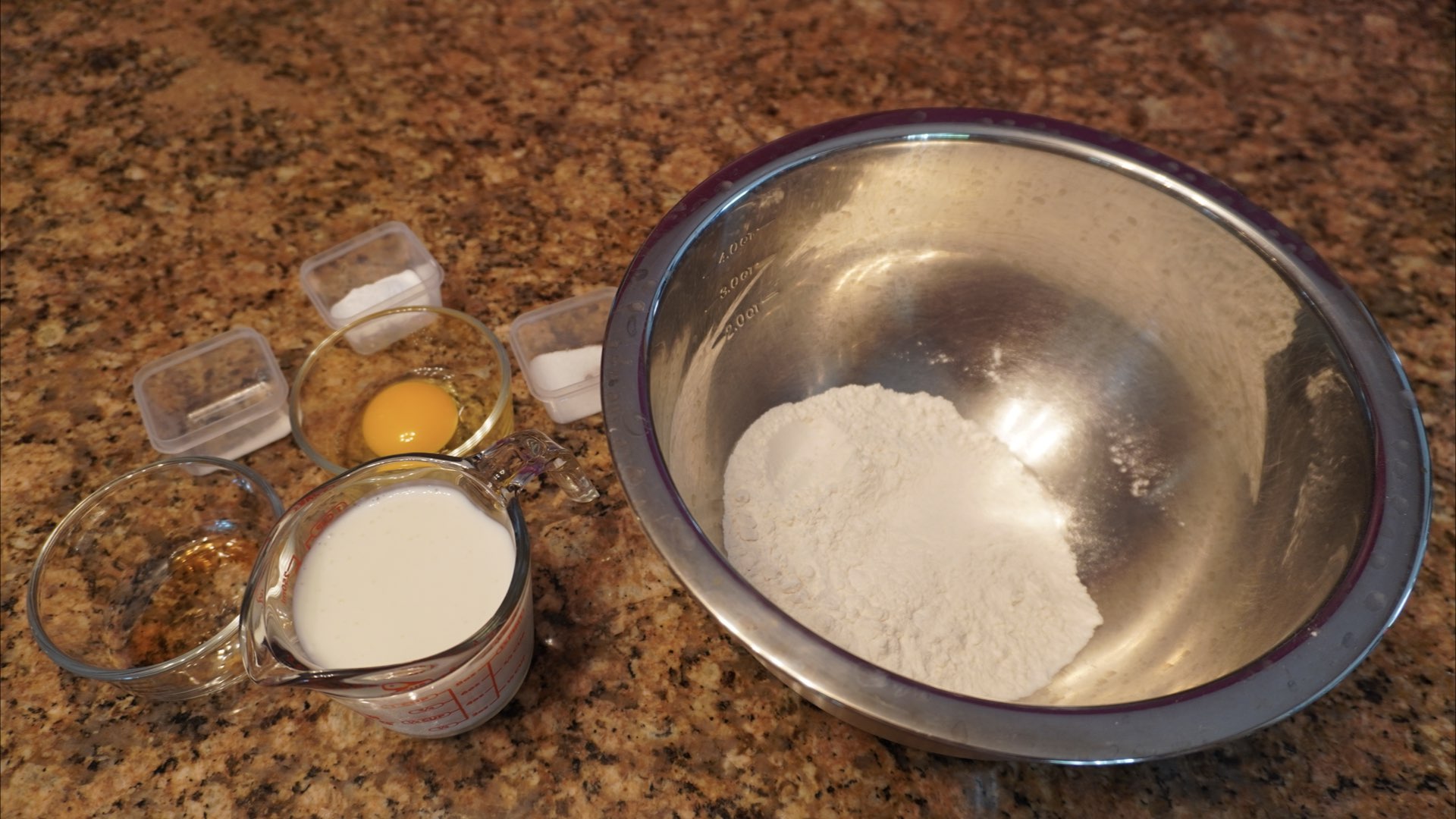
Step 2: Mix Your Dry Ingredients
In a large bowl you want to mix together your flour, baking soda, salt, and sugar. If you want to use self-rising flour, omit the baking soda. No baking soda? No problem! You can use baking powder instead in equal amounts. If you do not want to use the sugar, you can omit it. The sugar is to help keep the pancakes from drying out during cooking and gives a little bit of coloring. But it is not necessary for the recipe. Mix these ingredients together until they are well combined, then set aside.
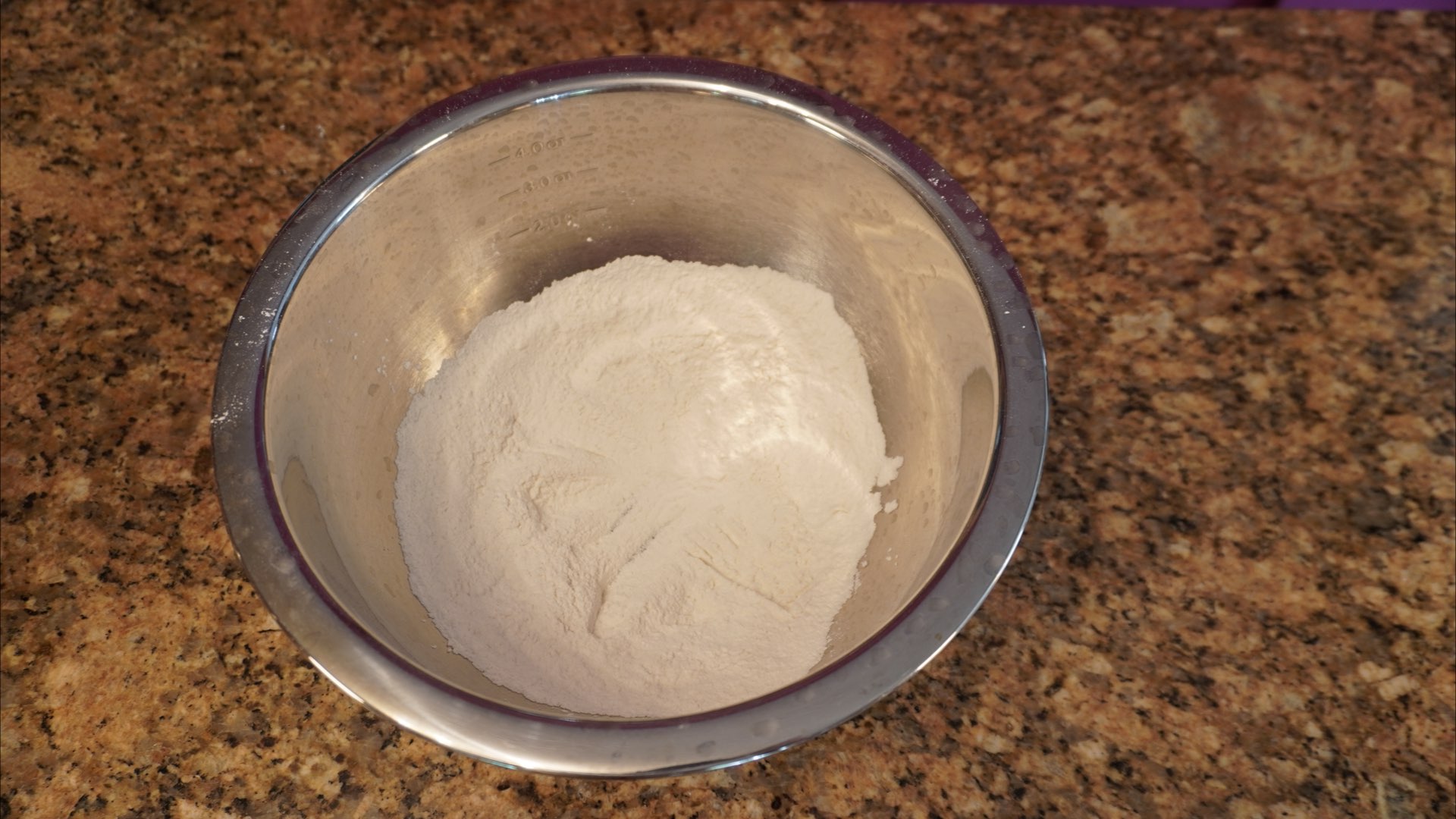
Step 3: Mix your Wet Ingredients
In a smaller bowl, you want to beat together your buttermilk, eggs and vanilla. Using vanilla is not necessary, and if you were making a more savory side dish, I recommend you skip the vanilla.
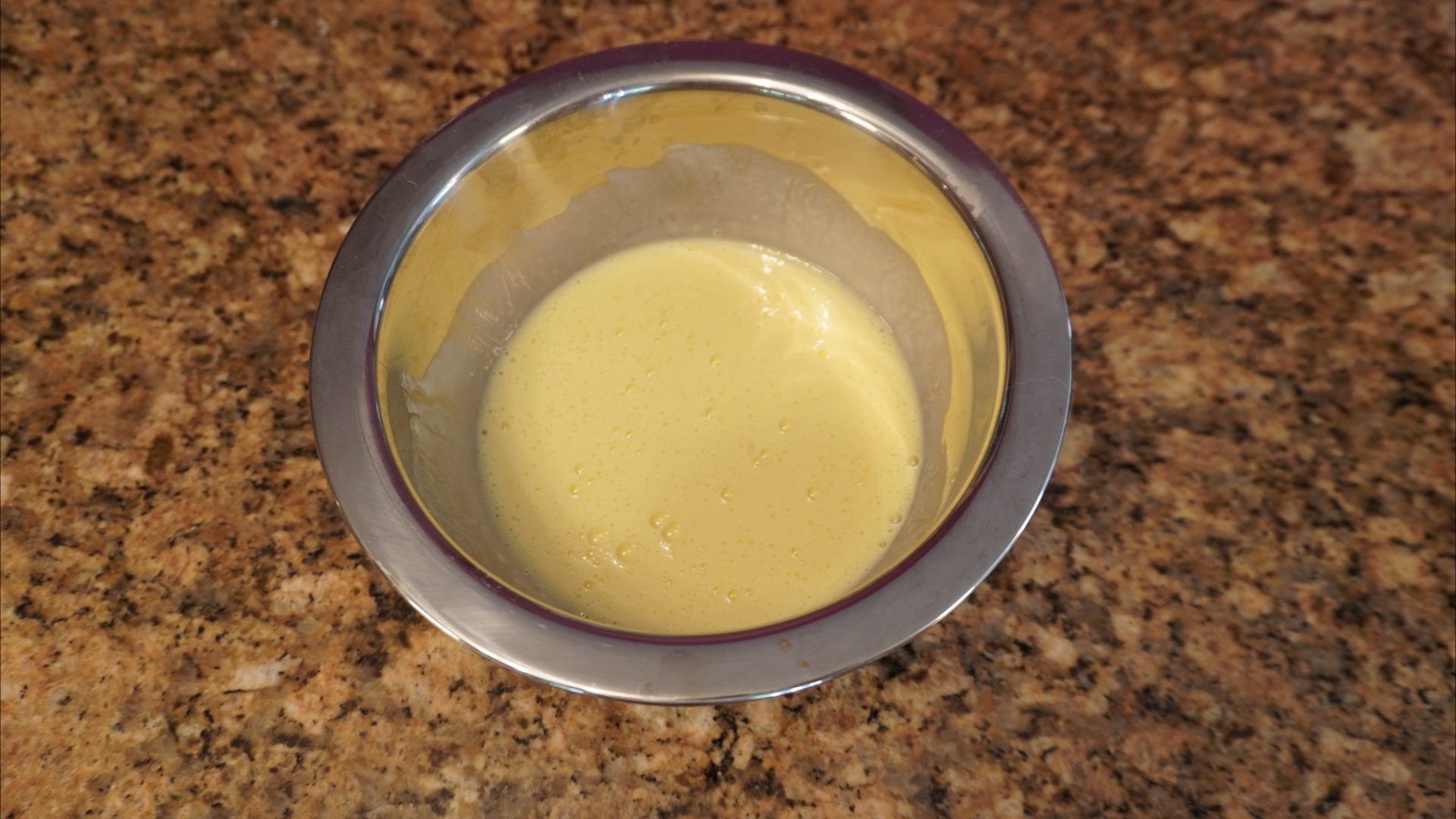
Step 4: Combine Wet and Dry Ingredients
Make a well inside the dry ingredients by pushing all the flour mixture to the sides of the pan. Now pour in your wet ingredients and quickly stir together until it is just combined. There may be some lumps and that is OK. You do not want to over mix pancake batter as it will become tough and chewy.
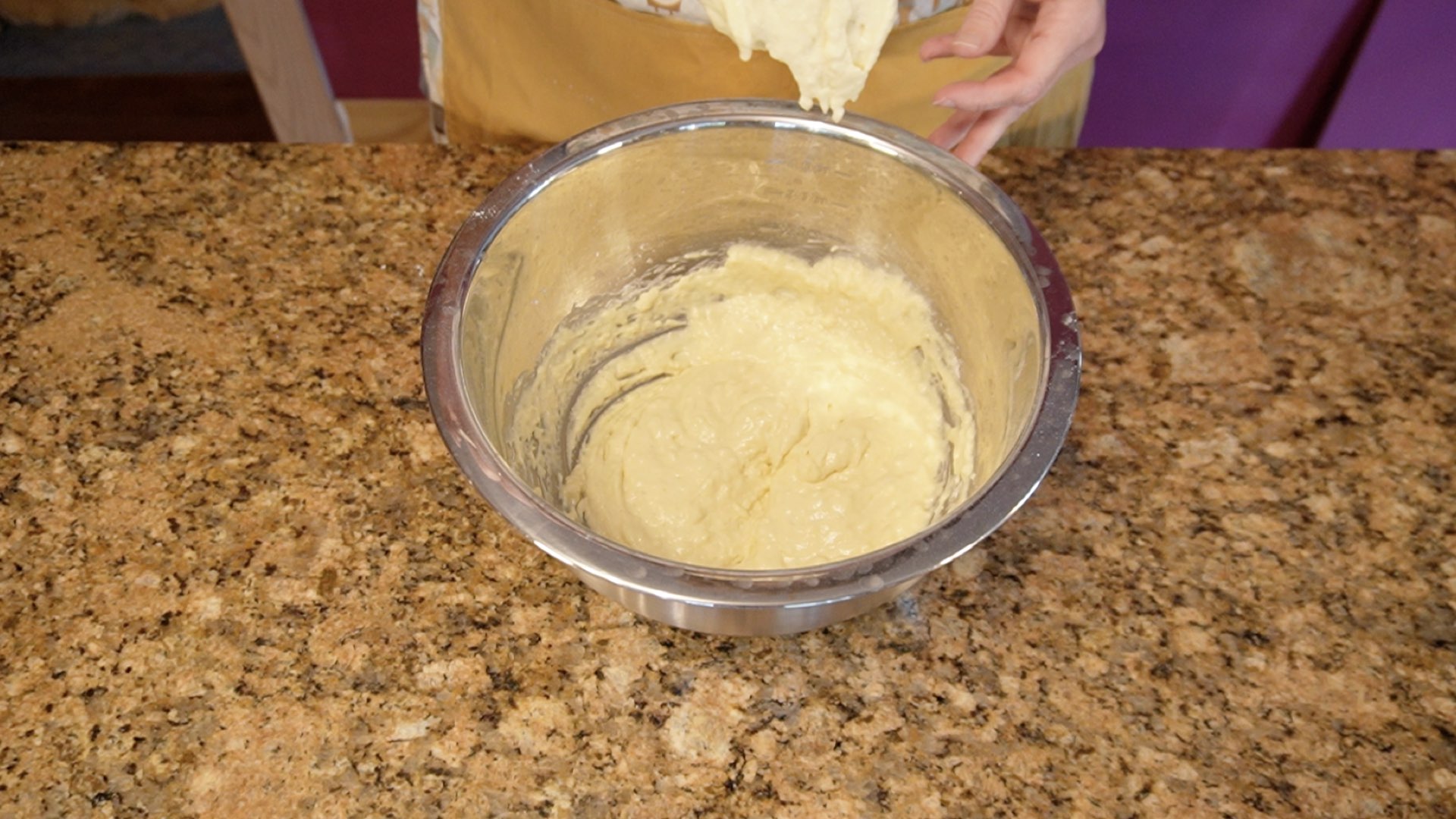
Step 5: Preheat your Skillet
Preheat your skillet and allow it to come to temperature. You will know it’s ready when you put a small amount of water in the the pan and it sizzles and evaporates immediately. If using a non-stick pan, do not heat too long as it can ruin the finish. It is best to refer to the owner’s manual when using non-stick pans. For pancakes, we highly recommend cast iron skillets but realize not everyone has access to one.
Step 6: Cooking your Pancakes
Drizzle a small amount of oil, about 1 teaspoon, in the shape of a G inside your skillet. If you are using a nonstick pan, do not put oil in your pan. Oil can adhere to the pan’s non-stick surface and permanently mar or ruin it. Instead, add the batter directly to your pan.
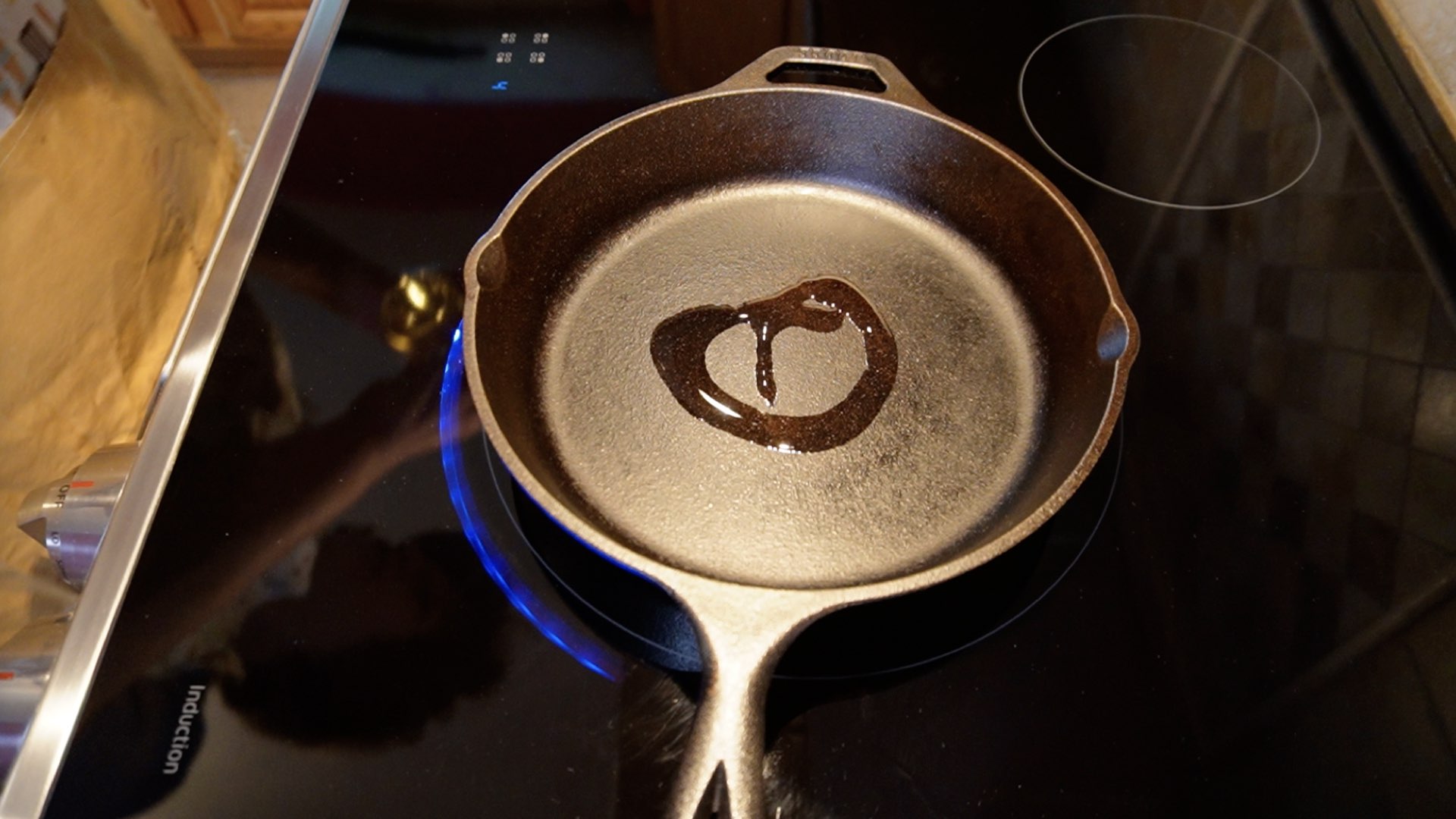
You want to add 1/3 cup (approximately 80 mL) of batter into the middle of your pan and spread it out into a circular shape. Cook one side for approximately 2 to 3 minutes until the edges start to dry out and you see bubbles forming throughout the pancake.

Once this happens, quickly flip it and cook another 2 to 3 minutes until golden brown or the internal temperature reaches between 200°F (93°C) – 210°F (99°C.).
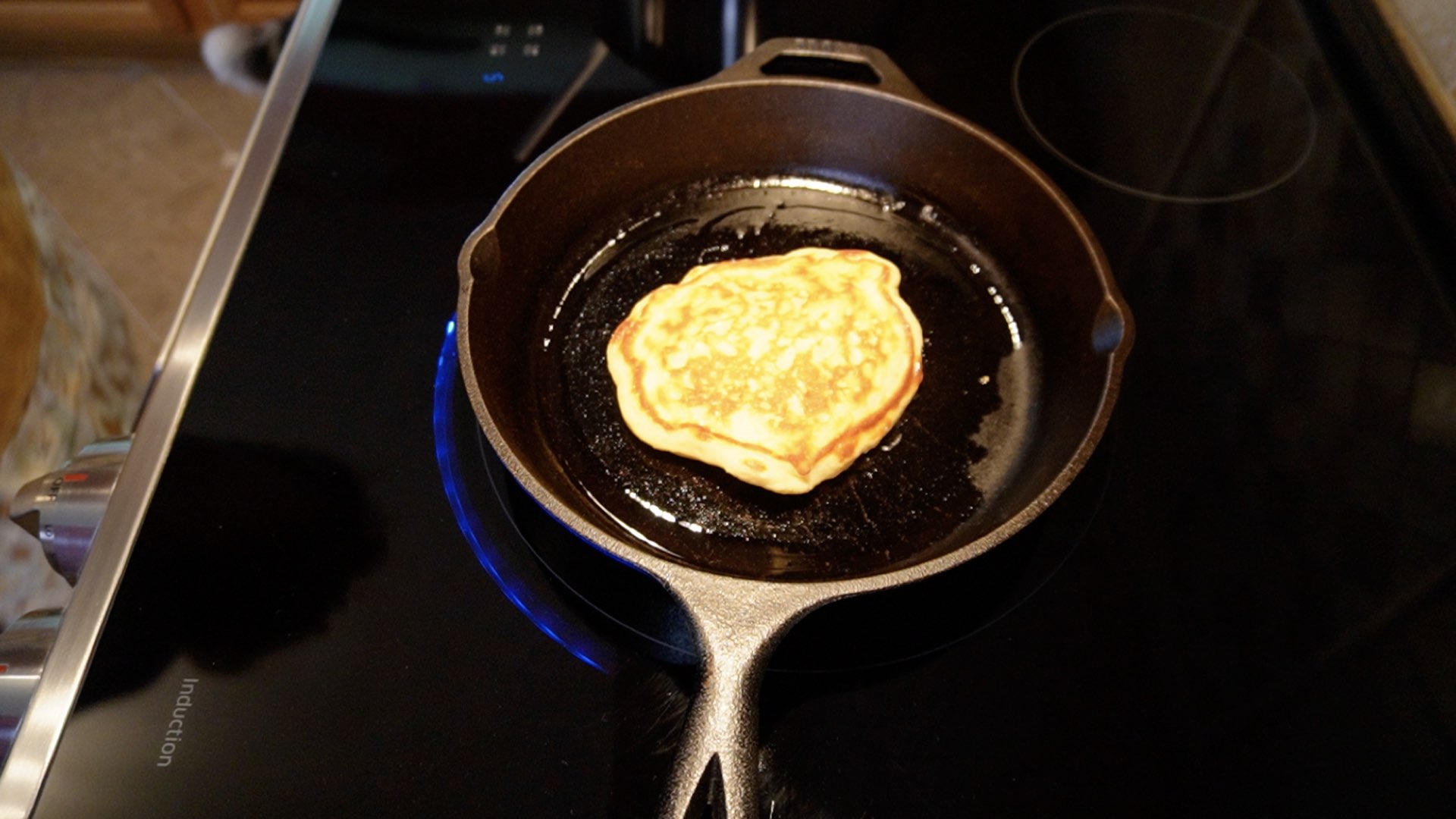
Do not flip your pancake more than once or this can toughen it up and dry it out. The bottom of the pancake should be a golden brown, just like the top! To serve multiple amounts of pancakes at the same time, you can keep them warm by placing them in your oven at the lowest setting on a baking sheet.
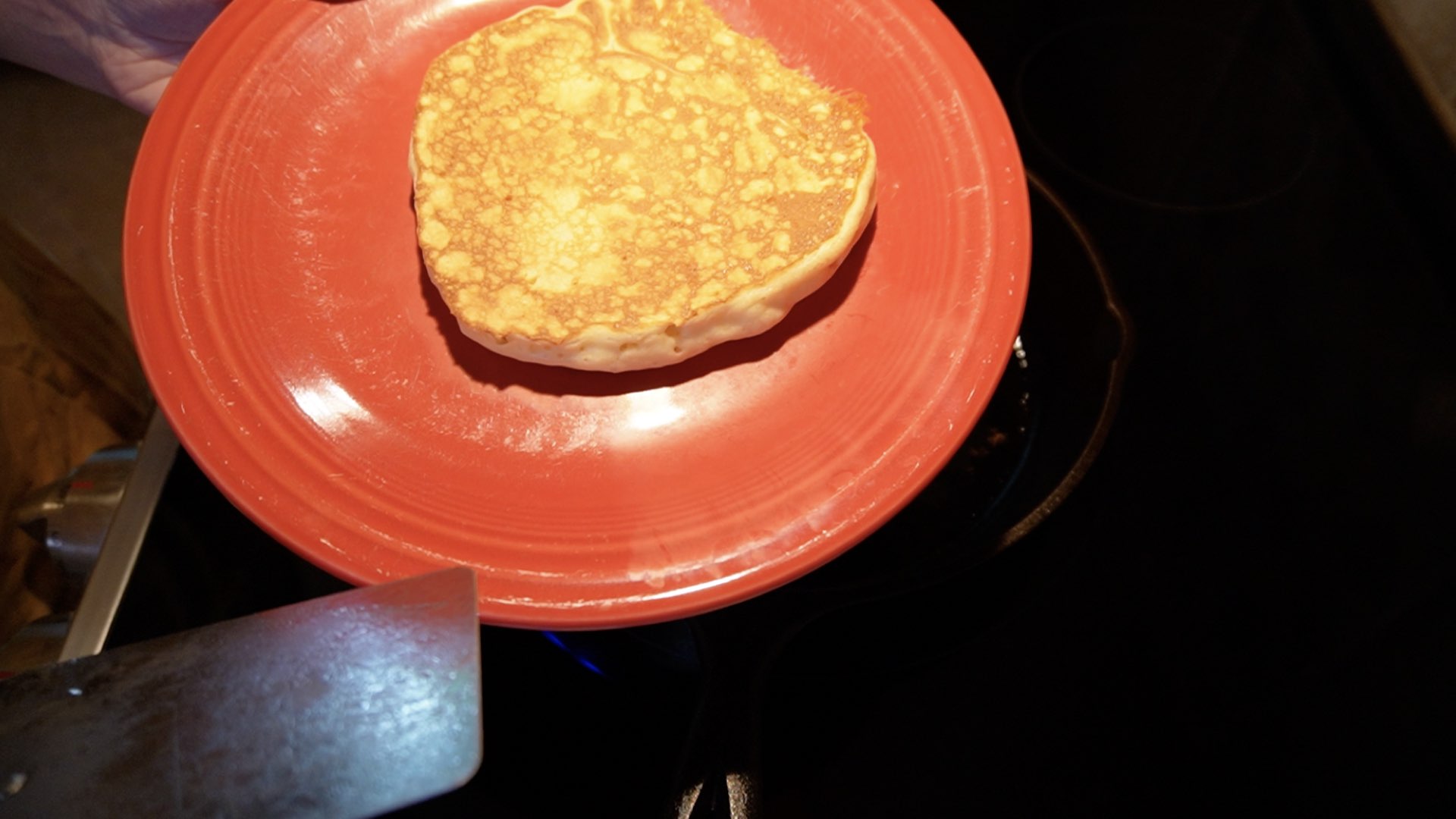
Now it’s time to serve and enjoy your pancakes!
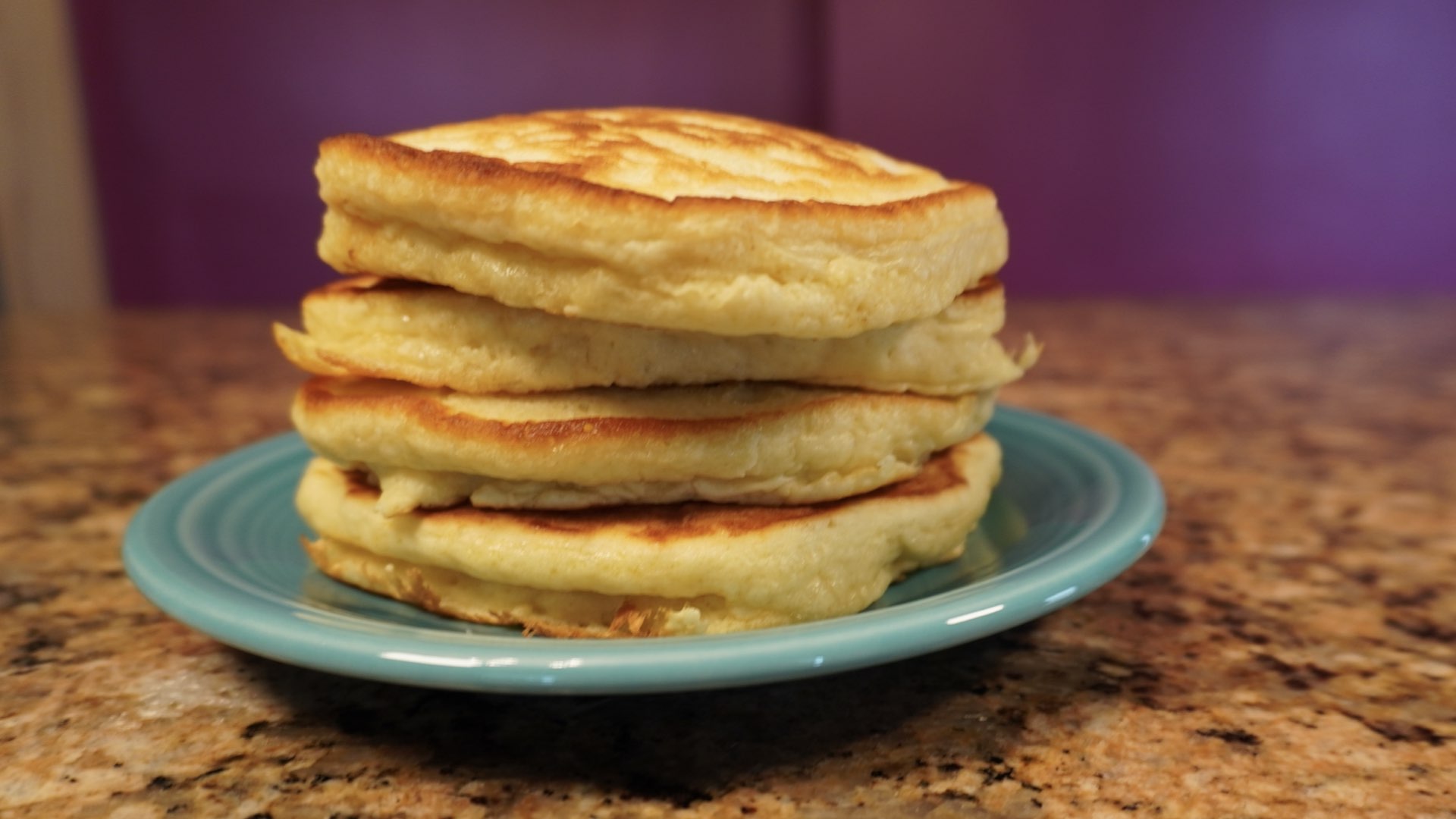
Troubleshooting
Let’s go over some basic issues that may pop up when making this buttermilk pancake recipe. We will also show what various pans can do to the pancake exterior.
If you see a lump of flour inside your pancakes, your flour may be older or you live in a humid climate. Flour often becomes lumpy as it ages due to humidity in the air clumping the flour. To prevent this from happening, next time you can pre-sift your flour or break the lumps up prior to mixing.
Another reason this may occur is due to adding cold ingredients to room temperature ones. To prevent this, bring the buttermilk and eggs to room temperature prior to mixing the ingredients.
Pancake that do not have a crispy edge, are brown throughout and don’t have a marble pattern like this, is likely due to the type of pan you are using. Non-stick pans will brown the pancake completely throughout and will not give the pancake the same appearance as one cooked in a cast iron skillet. Below is an example of a pancake cooked on a non-stick surface.
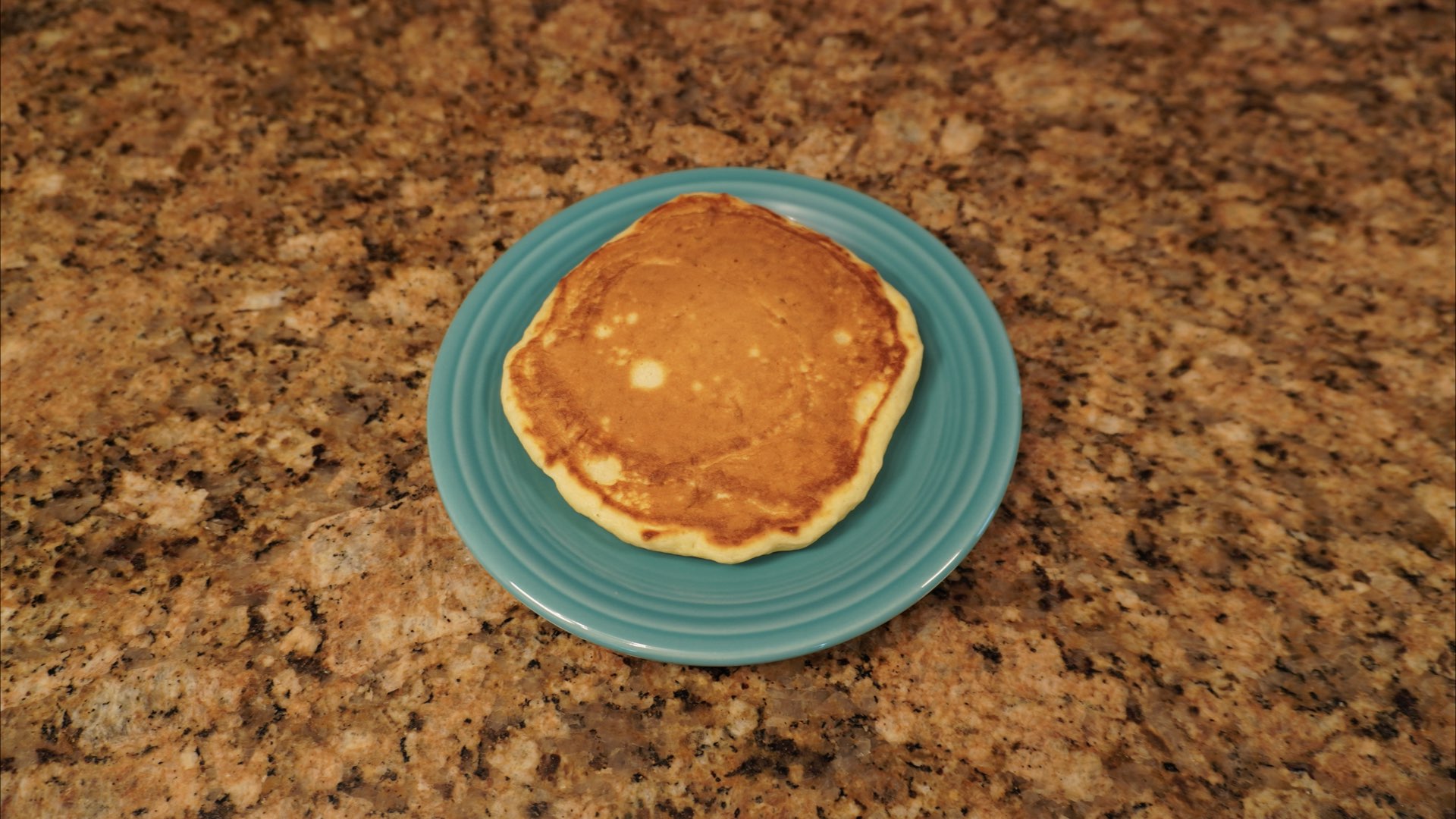
In contrast, this pancake was cooked on a cast iron skillet. It’s crispy on the edges, not greasy, fluffy and light. This is our favorite method.
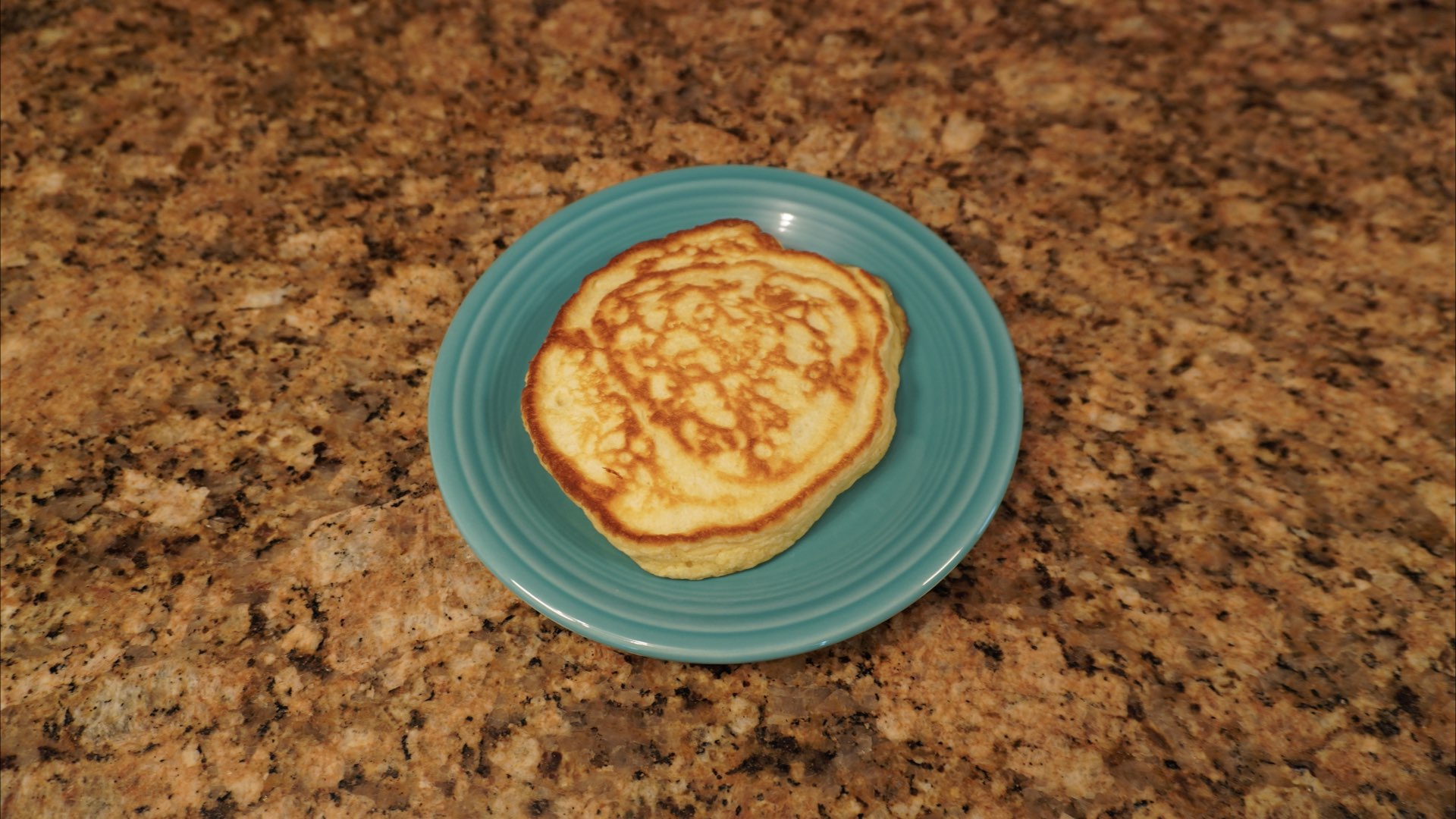
The pancake below was cooked with non-stick cooking spray. The lines in the pancakes are from it sitting on a cooling rack. Look at the spray pattern in the center of the pancake. Non-stick spray also tends to make a thin, tough exterior if cooked too long or at too high of a temperature. It is our least favorite.
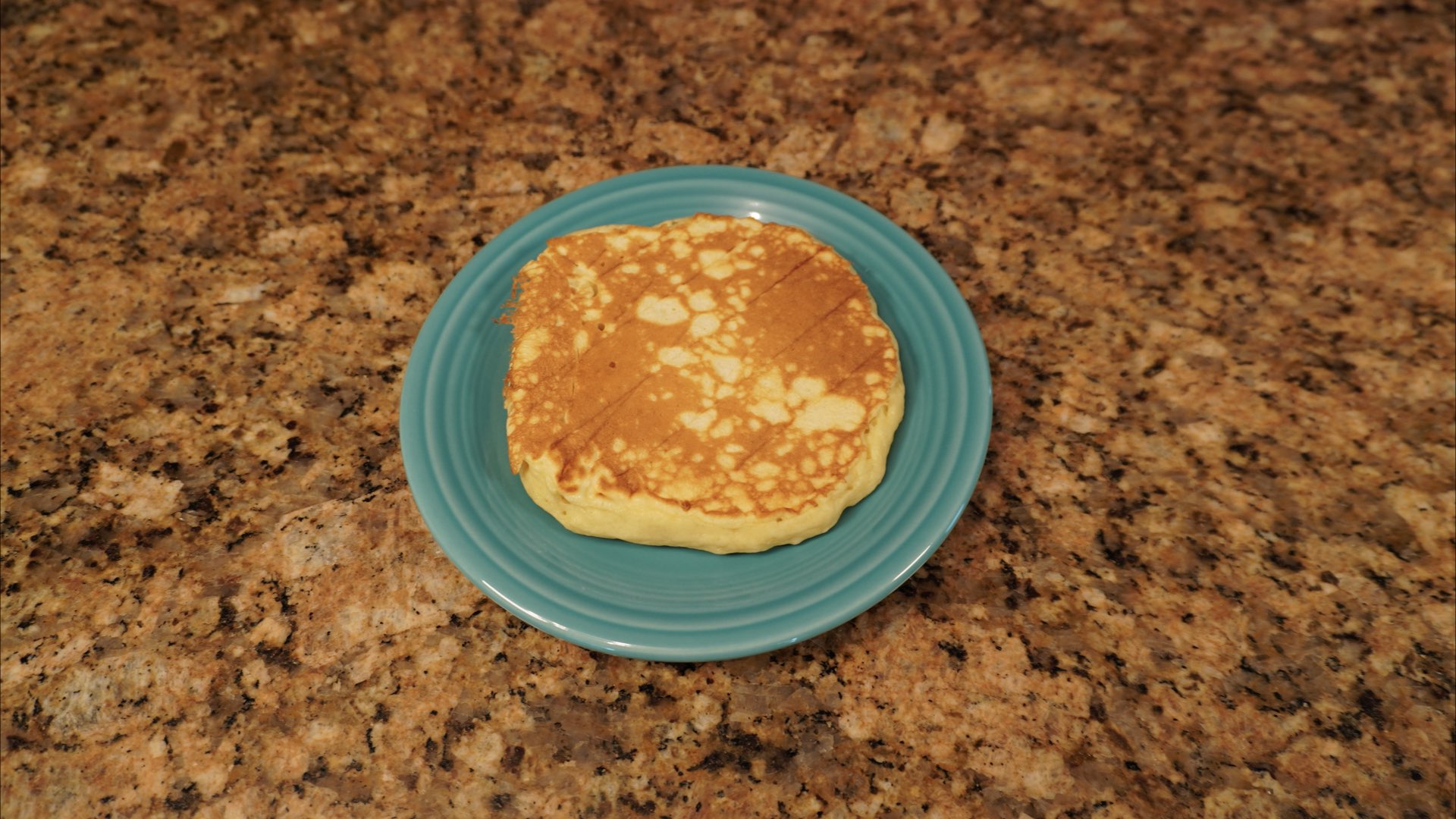
This pancake was cooked at too low of a temperature. Notice the light coloration and shiny, greasy appearance.

This pancake was cooked with butter instead of oil. The marbling is much lighter due to the steam the water in the butter created while cooking. For best results, we recommend oil, lard, or shortening.
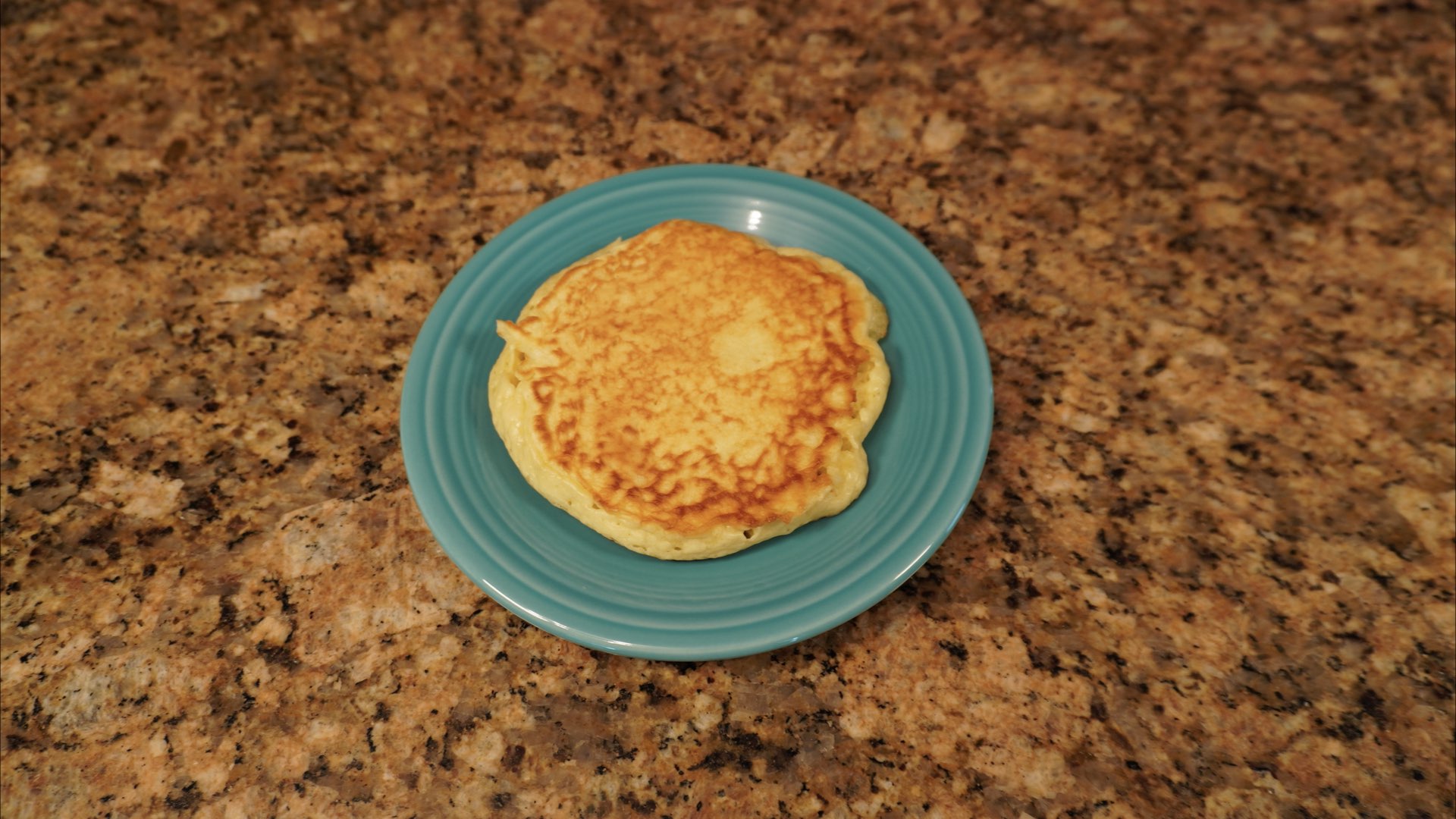
Substitutions and Tips
Here are some common substitutions for this buttermilk pancake recipe for one. Whenever possible, we like to provide substitutions and tips along the way.
- You can use a buttermilk substitute for this recipe, but it is not ideal. In general when something has the word buttermilk in the recipe title, it is best you use buttermilk and not a substitute.
- You can use regular milk in any percentage in place of buttermilk, but you will need to replace the baking soda with baking powder. They will not rise with baking soda in equal amounts.
- Instead of plain or all-purpose flour you can use self rising flour. If using self rising flour, omit the baking powder and baking soda.
- If you do not have baking soda, you can replace with equal parts baking powder.
- Due to the baking soda, this recipe is naturally high in sodium. However, you can make a few minor changes to reduce the sodium levels. To decrease the sodium intake to 577g per pancake, omit the 1/8 tsp of salt. To further decrease the sodium, omit the salt, change the baking soda to 1/2 tsp (1.5g) and add 1/2 tsp (2g) of baking powder. This will result in 448.5 grams of sodium per serving.
- You do not need to use sugar in this recipe. The sugar does help retain moistness and keeps the pancakes from drying out. It also leads to a little bit of browning , but it is not necessary to have a good pancake.
- To make these pancakes even thicker, add 1-2 tablespoons of flour to the mixture.
- To make the pancakes thinner, add 1-2 tablespoons more buttermilk.
- You can melt 2 tablespoons of butter and add the wet ingredients if desired for more depth of flavor.
Storage
Pancakes are best fresh and hot off the skillet. They will lose crispness, become softer in texture and dry out quickly. For storage, you can wrap tightly in plastic wrap, place them in an airtight container and refrigerate up to 3 days or freeze up to 3 months. Defrost before eating. Unwrap the pancakes and heat on a baking sheet in an oven at 350°F (180°C) for 5-10 minutes until warm, or heat in the microwave in 30 second intervals until warm.
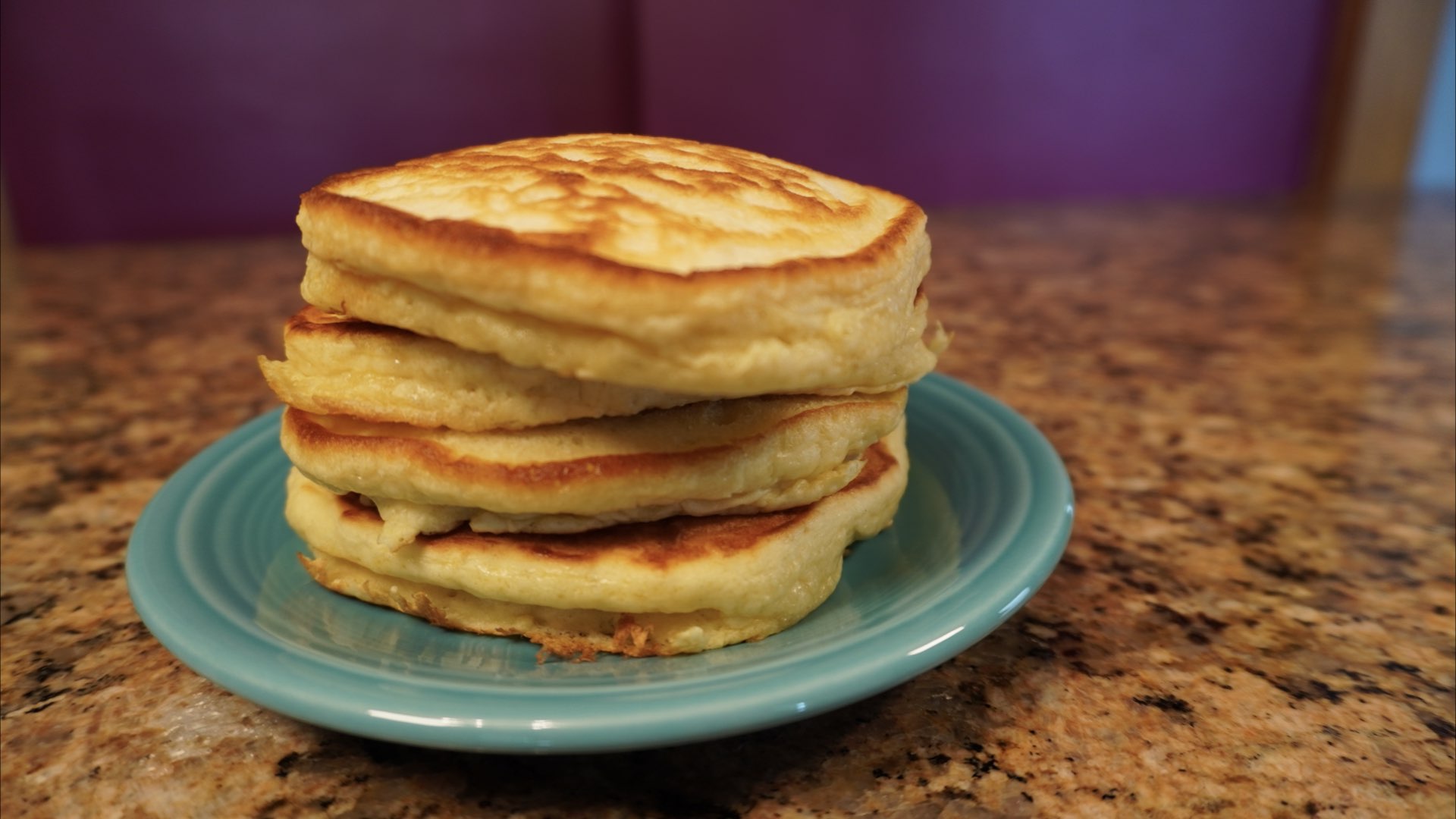
Did you know it was easy to make your own pancake syrup? Do you like your pancakes with or without syrup? Let us know in the comments below and why!

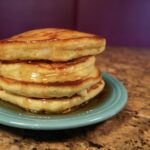
Appalachian Buttermilk Pancakes Recipe
Ingredients
- 1 cup (240mL) room temperature buttermilk
- 1 cup (150g) flour
- 1 large (50g) room temperature egg
- 1 tsp (4g) sugar, optional
- 1 tsp (3g) baking soda
- ½ tsp (2.5mL) vanilla, optional
- ⅛ tsp (.625g) salt
- 2 tbs (30mL) oil (for cooking)
Instructions
- About 30-60 minutes prior to cooking, bring your buttermilk and eggs to room temperature. Failure to do so can lead to lumps of unmixed flour in your batter.
- In a large bowl, combine flour, sugar, baking soda and salt. If flour is excessively lumpy, break up lumps with a fork or sift the ingredients together.
- In a medium bowl, combine buttermilk and egg. Add the wet ingredients to the dry and stir until just combined. Do not overmix. Let set for 5 minutes while heating the pan. Preheat your skillet over medium to medium-high heat.
- Drizzle the skillet with oil in a circular pattern in the middle. Add approximately 1/2 cup (120mL) of the batter to the pan, over the oil, spreading out into a circular shape.
- Cook 2 – 3 minutes. Once the pancake has bubbles and the edges are slightly dry, flip over and cook an additional 2 – 3 minutes. Internal temperature should reach between 200°F (93°C) – 210°F (99°C) when fully cooked.
- Repeat the last two steps until all pancakes are cooked. Serve while still warm.
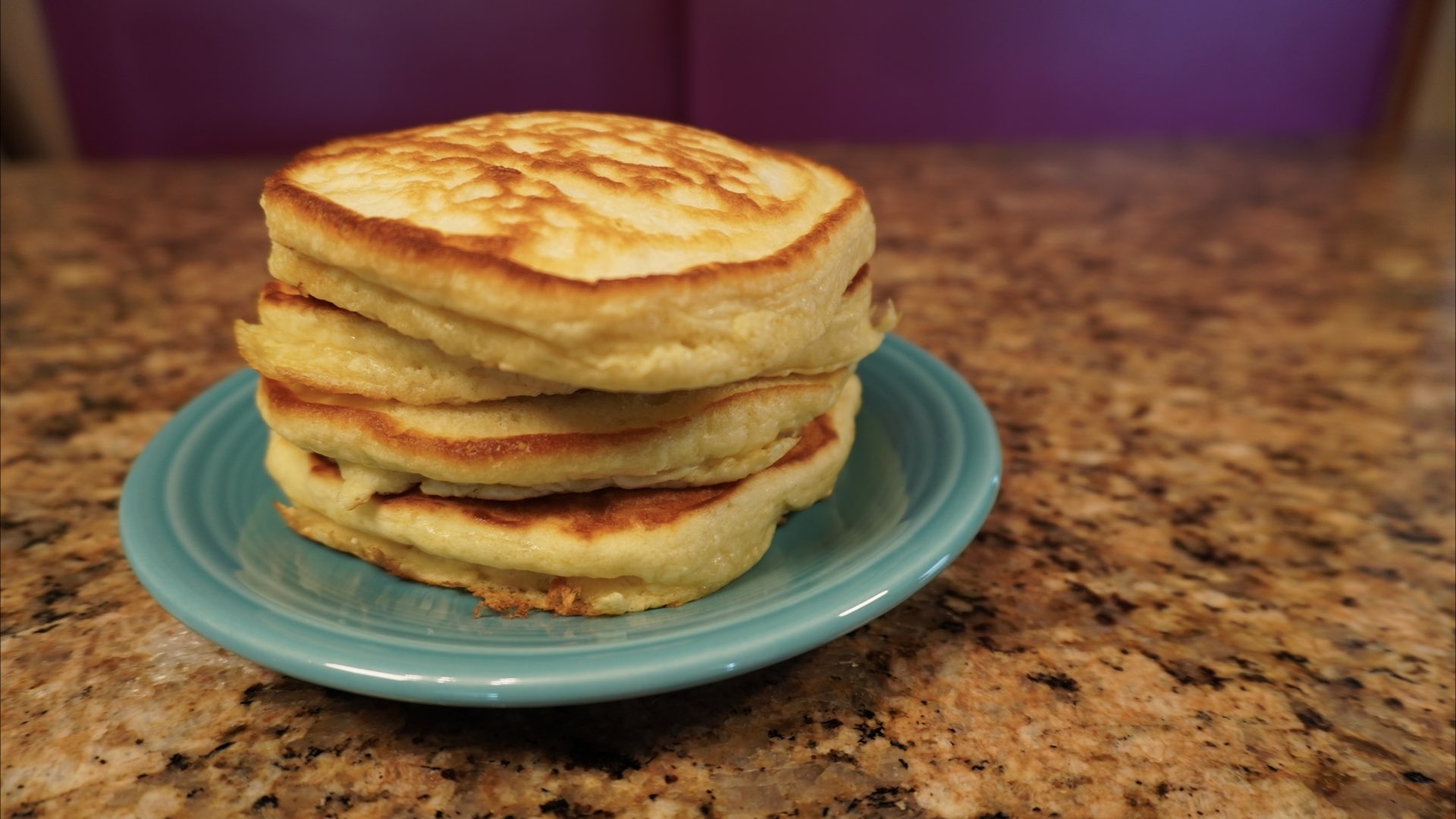
0 Comments